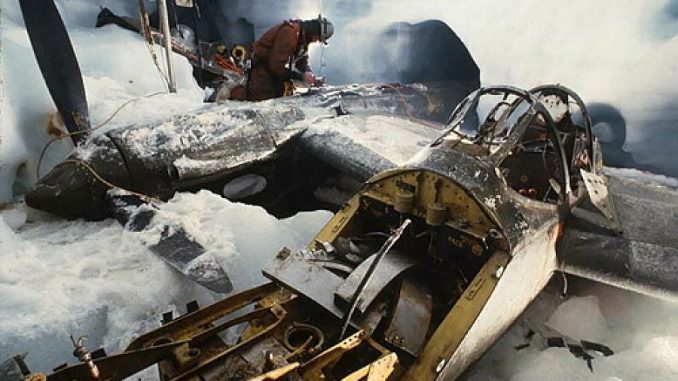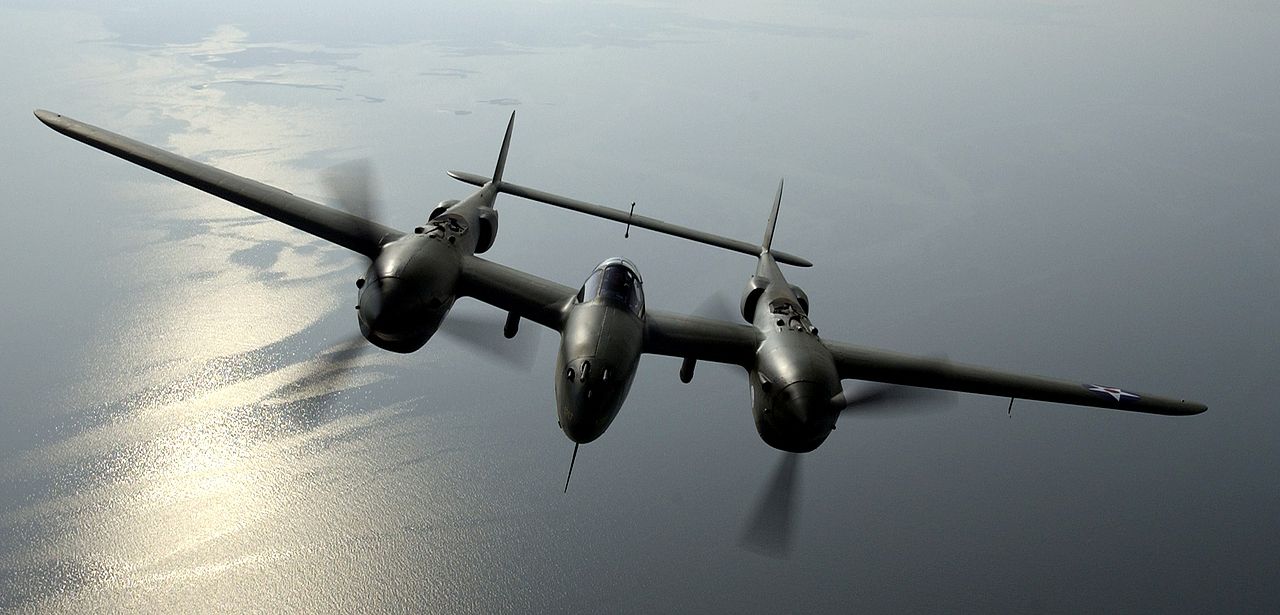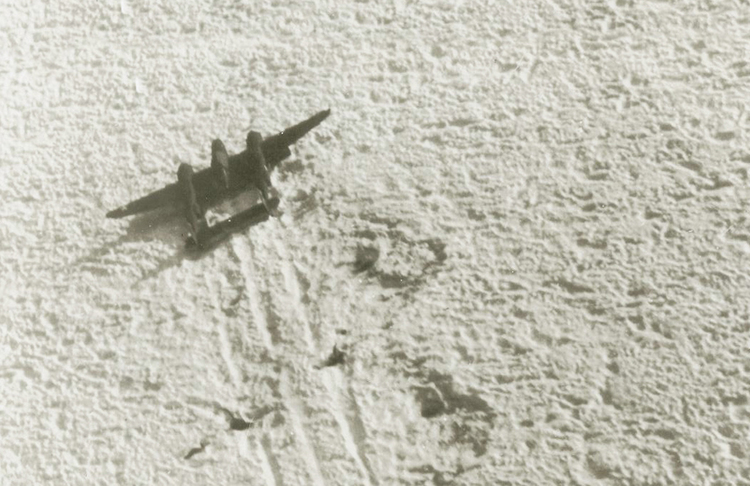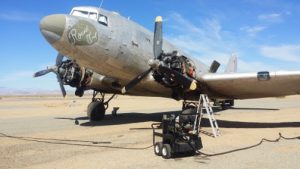

By Austin Hancock
In 2014, we reported on Ken McBride’s mission to continue recovery of the “Lost Squadron” of P-38s, in Greenland (click HERE). Today, we are just as excited as he is to bring you an update to said report. When we last checked in with the mission, Ken was seeking volunteers for a summer 2014 Greenland expedition, with the purpose of recovering a known ice-bound P-38. The team had planned to use the same recovery technique as was used on “Glacier Girl,” to bore-down through the ice to retrieve the twin-boomed WWII fighter. As if scripted for an Indiana Jones movie, the crew had even planned to utilize the rugged Antonov AN-2 “Colt” (with skis) as their main method of transport to/from the dig.
The Lightning is one from the same group of six P-38’s and two B-17s which got stranded on the ice in Greenland during a WWII ferry operation. As most readers will be aware, a previous team recovered one of these P-38s back in the late 80s, and restored her to flight. We all know that aircraft as Glacier Girl now. It’s long been many a person’s dream to go back for the others, and this summer that’s exactly what will be happening. YOU could be a part of that mission!

Fast forward three years, and today you will find the Lost Squadron still moving forward in their quest to recover the P38, and perhaps others as well. Since our last report, Ken has teamed up with businessman Jim Salazar, a heavy machinery mover out of Los Angeles, CA, not only on the Lost Squadron P38 recovery, but also leading the charge to search, recover, and repatriate the servicemen of the downed US Coast Guard J2F Grumman Duck.
 While the Antonov is now on mechanical standby in Canada, the good news is that Salazar and McBride have invested in a low time DC3-C47 aircraft. The “Gooneybird” will serve a larger role with the recovery effort than the Antonov can, with increased load-carrying capabilities. Furthermore, the security of having an “extra” engine, and more availability of replacement parts, makes the DC-3 a good choice. Currently based in California City, CA, “work is underway on this aircraft with expected flight testing soon.” This particular DC3 aircraft is fitted with the large cargo doors, the larger 1830-94 engines, and has recently been outfitted with snow skis. In an encouraging coincidence, the skis they acquired for this mission are the very same ones that were up on the 1992 expedition with a DC3 that was used by the original Greenland Expedition Society. Don Brooks, one of the team members, caught wind of the project and offered the hard-to-find skis, and sure enough, they are a part of this expedition, and will hopefully lend a halo of their success. There has been an overwhelming response by the aviation community to help support the aircraft and crew knowing that there is such a historical aircraft being used as the platform plane for the project.
While the Antonov is now on mechanical standby in Canada, the good news is that Salazar and McBride have invested in a low time DC3-C47 aircraft. The “Gooneybird” will serve a larger role with the recovery effort than the Antonov can, with increased load-carrying capabilities. Furthermore, the security of having an “extra” engine, and more availability of replacement parts, makes the DC-3 a good choice. Currently based in California City, CA, “work is underway on this aircraft with expected flight testing soon.” This particular DC3 aircraft is fitted with the large cargo doors, the larger 1830-94 engines, and has recently been outfitted with snow skis. In an encouraging coincidence, the skis they acquired for this mission are the very same ones that were up on the 1992 expedition with a DC3 that was used by the original Greenland Expedition Society. Don Brooks, one of the team members, caught wind of the project and offered the hard-to-find skis, and sure enough, they are a part of this expedition, and will hopefully lend a halo of their success. There has been an overwhelming response by the aviation community to help support the aircraft and crew knowing that there is such a historical aircraft being used as the platform plane for the project.
For the 2017 project, the main focus is the Lost Squadron P38 recovery of aircraft Echo. In another inspiring sign, joining on board this year will be Bryan Wilson, the son of Robert H. Wilson, one of the pilots of the Lost Squadron. Bryan was eager to participate in an expedition that might lead to the recovery of his father’s plane.
Salazar and McBride also formed a second entity, Hot Point Solutions, which will be working with the U.S. Coast Guard and the DPAA in a quest to repatriate the crew of J2F Duck, Coast Guard Lieutenant John Pritchard, Petty Officer Benjamin Bottoms, and Corporal Loren Howarth, presumably inside the aircraft approximately 150 feet below the ice cap. About 27 miles from the Lightning, the Duck and original crew are waiting to be recovered. The accident occurred in 1942, and the recovery of this aircraft would bring closure to the families of the lost crew. Both with in-house radar systems and private-sector support, several systems are at hand to look deep into the polar ice cap. An exemplary team of geophysicists, mountaineers, recovery specialists, pilots, glaciologists, bringing together the varied skill sets needed to accomplish these endeavors, and armed with innovative tools like drones, miniature helicopters, and remote control buggies, this team is on the right track to locate these men who were lost during WWII. The group sent an exploratory crew in July of 2016 on a completely volunteer basis and made contact with an anomaly approximately 100 feet below the ice cap, fewer than 100 yards from where the Coast Guard initially thought they made contact with the Duck aircraft. This finding has inspired the group who are redoubling their efforts for the 2017 season.
In a gesture of solidarity with the families of these men, Hot Point Solutions is partnering with the U.S. Coast Guard and the DPAA to construct a memorial to honor the men of the downed J2F Duck, along with the others who have fallen in Greenland. The families have been informed and it looks like this ceremony should be happening relatively soon, and they hope to bring the remaining family members to a ceremony at the Kulusuk Airport where a memorial plaque will be unveiled.
The 501c3 Non-Profit Lost Squadron team is looking for potential members. Those with experience in funding, equipment, or just have spare time and desire/passion to donate are sought. The expected time-frame for recovery efforts in Kulusuk, Greenland, is from mid-May to the end of July. The Lost Squadron will have a new website up shortly, those wishing to get involved may contact Jim via email: (ken@classicchevyparts.com, jimsalazar1@hotmail.com)



I’ve followed Ken a few years ago . That’s great to hear he’s back at it and I hope he recovers everything .How can I keep informed on this summers expedition ? Good Luck with it !
If I was 20 years younger I would be all over this mission Dam Best wishes to all who will be there.
The memorial ceremony was in fact held on August 1, 2017 in Kulusuk Greenland, where the memorial plaque, mounted to a large rock at the base of the Kulusuk Airport flag pole was revealed to the public. No trip to the ice cap this year but preparations and equipment staging continues for a recovery effort in 2018.